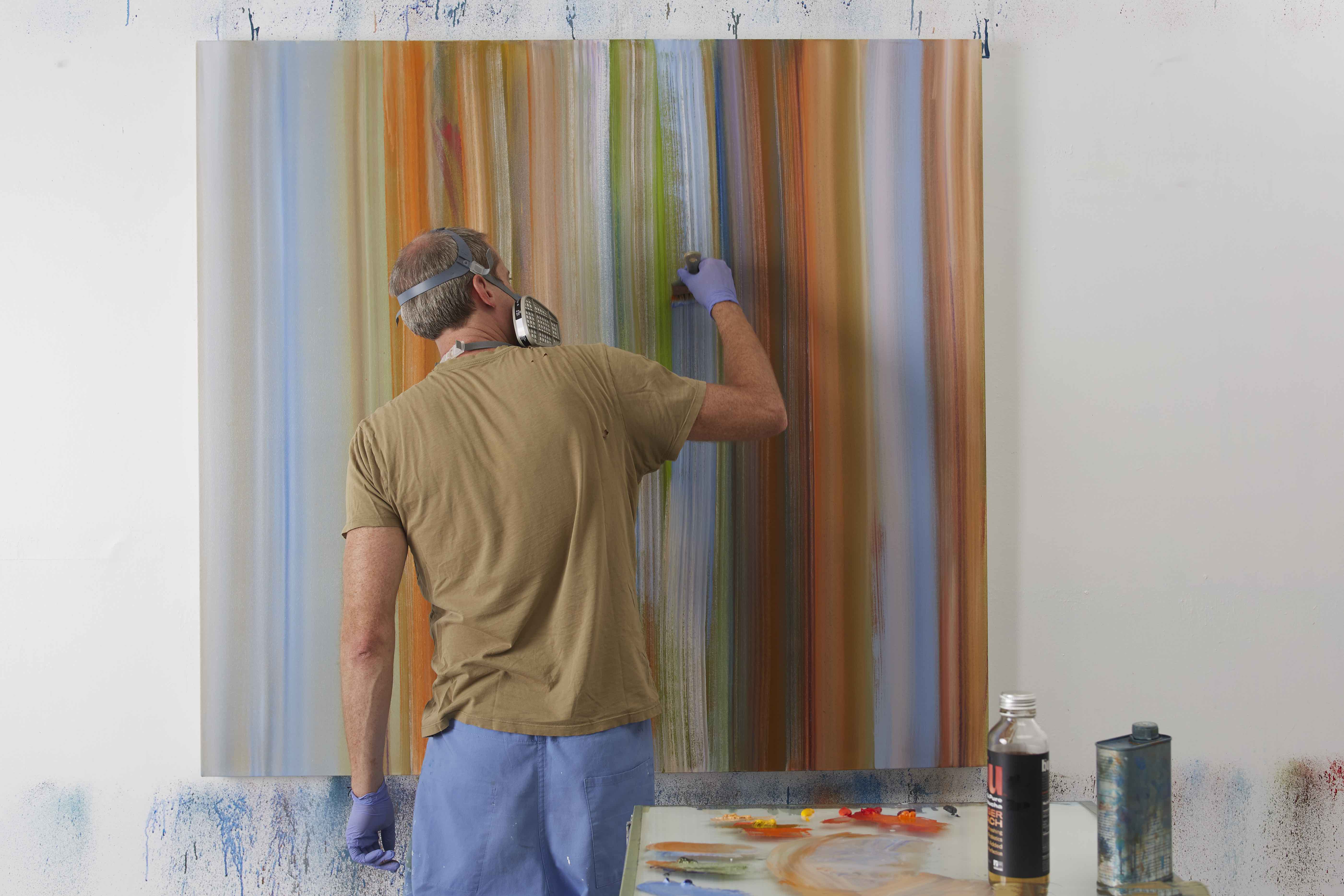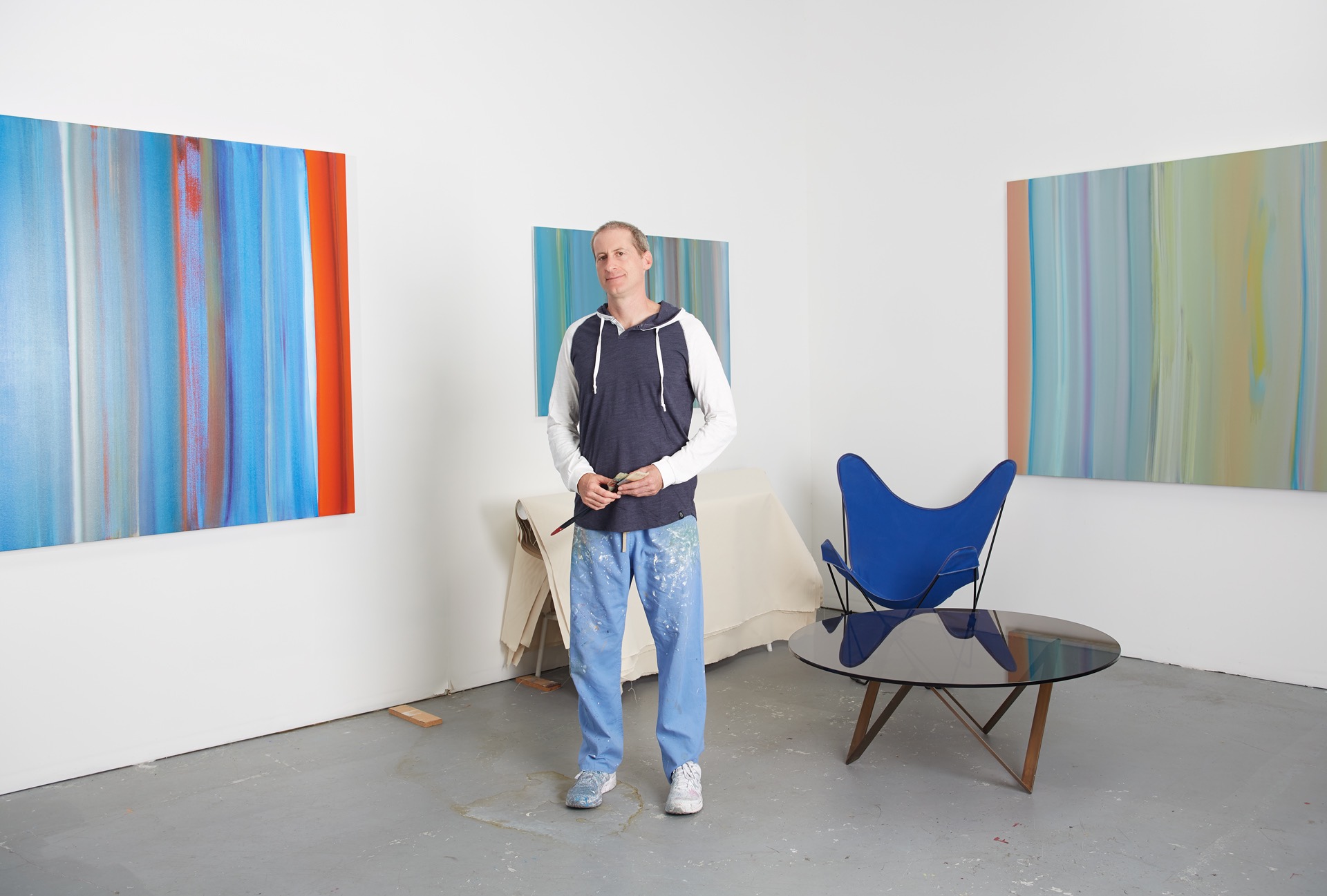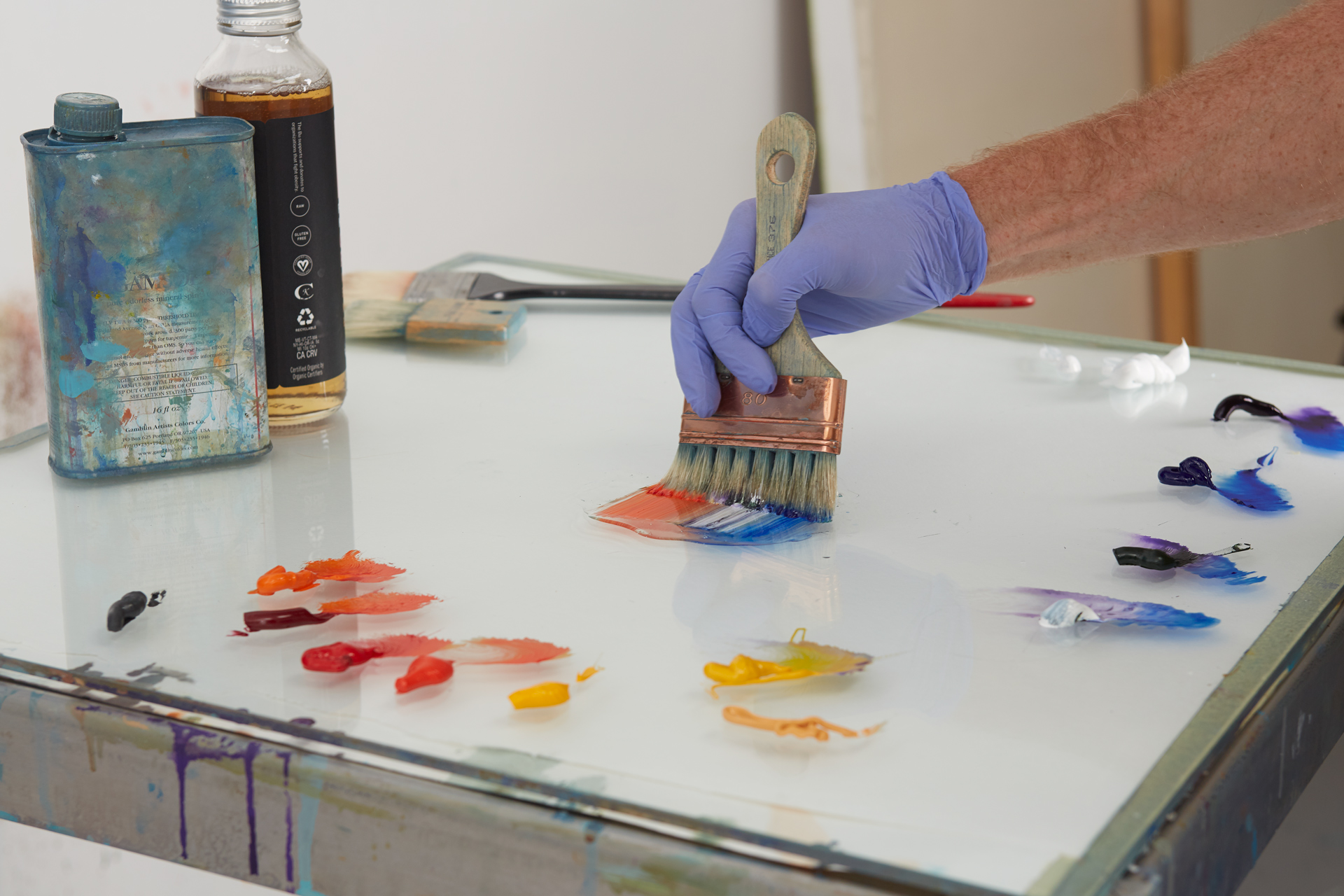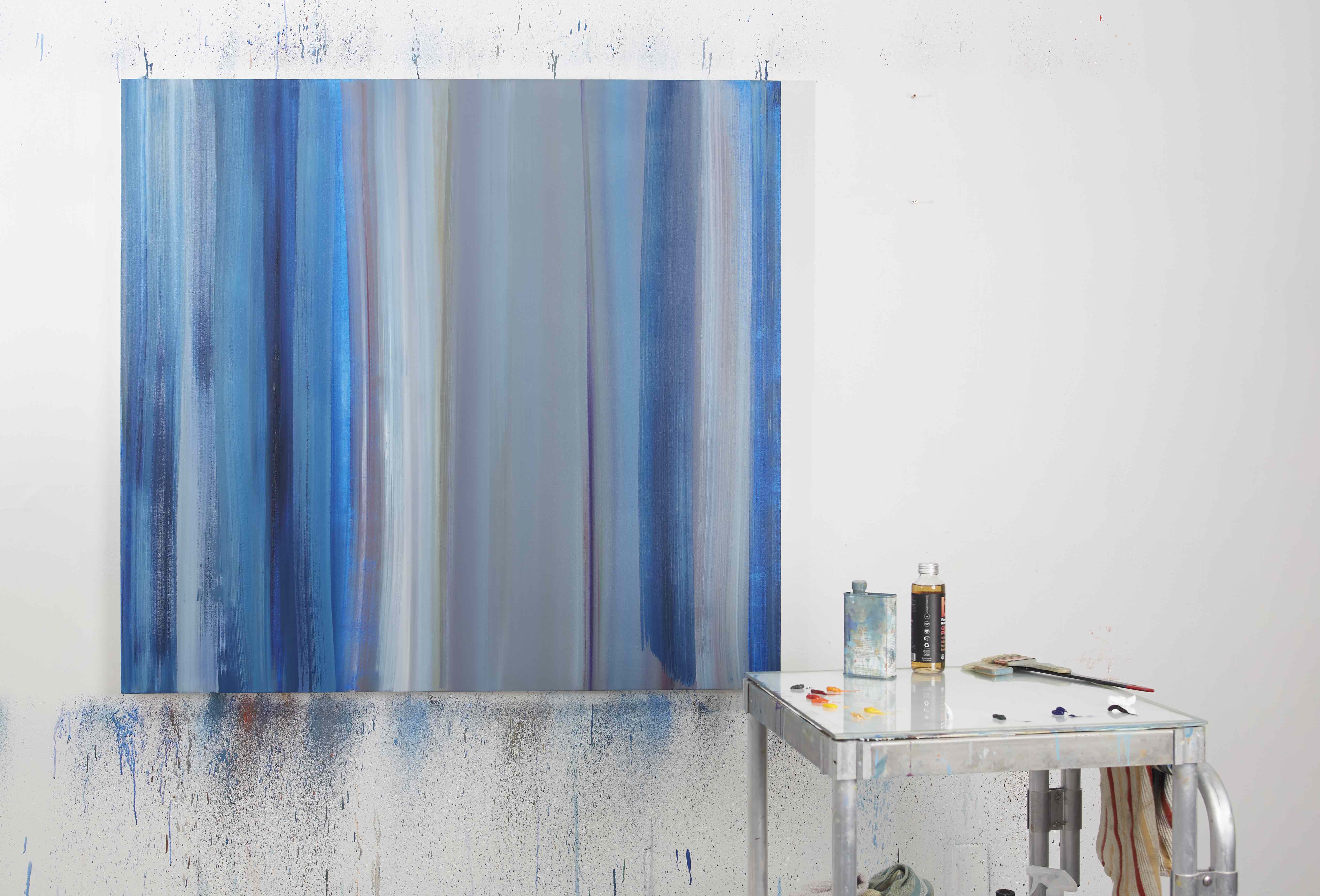19th Oct 2021
Exploring Color and Balance with Willy Richardson

In Studio with Willy Richardson:
At his studio in Santa Fe, New Mexico, Willy Richardson is in his element. Stretching bright swathes of paint across broad canvas, Willy builds his mesmeric abstractions through graceful gestures and bold, harmonized colors.
Before moving to Santa Fe, Willy lived and worked in New York City for a decade, where he immersed himself in the international art scene, earning his M.F.A. in painting from Pratt Institute in 2000. His work has been exhibited alongside renowned modern and contemporary painters, including Josef Albers, Hans Hofmann and Jackson Pollock, and is collected around the world.
TurningArt joined Willy in his studio to learn more about his work and practice, and to listen to his experiences as an artist.
What can you tell us about your journey to becoming a professional artist?
I didn't think of myself as an artist growing up. I was more the well-rounded type. I loved all school subjects and that included but wasn't limited to art.
Only looking back do I see the obvious...
I spent a good amount of time building model airplanes, gardening, building rock walls, making watercolors, making origami - when I was alone I was making something.
There's a photo my Mom took when I was still crawling. I arranged all the shoes in the house into a half-circle, arranging the different shoes into a pattern. So I've always thought about symmetry, pattern, breaking pattern, consonance, and dissonance and I've always worked with my hands and problem solved with my mind.
My shift towards art as a potential profession didn’t take place until graduate school. Though I studied art and art history in high school and college, I was still debating between writing and painting.
After living a few years in the "real world" I had spent a good amount of time painting and writing alongside working odd jobs and realized that there wasn’t enough of me to paint, write, and make a living, so I decided to pick one. I decided to make writing a personal pleasure and enrolled in the MFA program at Pratt Institute for painting.

How would you describe your paintings?
I paint with oils and watercolors. I have distilled the painting process down to the most limited structure I could find, which still allows me to push back against limitations with all my might and fury.
This tug of war crackles and sizzles; my paintings influence space and radiate and extend themselves into people’s vision, conversations and lifestyles.
What is your typical process for beginning a new painting or series?
One painting series leads to the next. A color pattern, an aesthetic problem, or greater world dialogue leads to a question. It always starts with a question...
I then have a clearly (or somewhat clearly) defined problem that can not be resolved through rational thinking. I set to work on the problem, much in the way I imagine a mad scientist or village medicine man sets to work. Though I do have a map, I keep my eyes on the road.
What advice do you have for artists who are beginning to build their careers? Have there been any habits or strategies that you have adopted that you feel have created more opportunity or visibility for your work?
My advice is to give away all your art until your friends have 3 or more of your paintings. The day you bring a painting over to a friend's house and they say there's no more wall space for you, it's time to show your work to the public.
I speak from experience... this worked for me and has helped fellow artists and students when they were stuck in their studios with too much work piling up.
A friend and colleague at Santa Fe University of Art and Design had me over for a studio visit a few years ago. She was stockpiling her paintings and drawings and couldn't get anything into the public eye. I told her straight up that she was on the verge of hoarding, building a castle for herself and no one else. She needed to get feedback from others but was waiting for a gallery to swoop down to rescue her. She put too much value into her work and presupposed only a gallery could create a proper setting and produce dialogue.
We have to let it go. We have to start with generosity. I gave away thousands of hours and thousands of dollars worth of art materials for many years before I saw a single penny return.
The week after my studio visit, my friend gifted me a painting, saying this was energetically the beginning of letting her workflow out of her studio. Within a few months, she had work in an exhibition at a Museum in Taos!
It works - it really does. Make your studio a river, not a lake.

Do you consider yourself, and all artists, to be entrepreneurs? Why or why not?
Before we thought of artists as geniuses, we thought of them as artisans. There is a winding history to how we came to think of artists as rebels, but not a long history. Artists for the most part, throughout European history were entrepreneurial.
During the 7th grade, there was a time when I would go to the candy store after school. This was not for my consumption. The goodies were intended for sales the next day.
I’d buy Blow Pops for 10 cents and sell them on the Capshaw Middle School open market for 25. Why nobody else was doing this, was a total mystery. Even at a premium, my product was in high demand. I was set on a goal- video game cartridges for the Atari 2600.
My English teacher pulled me aside one day and told me I had to go to the principal’s office. The principal told me I was facing suspension, but he’d let me off this time. This was a lot for me to take in. I was an academic achiever. Suspension was for kids who got in fights, not pre-pubescent goodie-two-shoes, like myself!
My parents were asked to pick me up from school early, to make the whole event more serious. I don’t remember who picked me up that day, but whichever parent it was, was laughing when they arrived. They defended my enterprise, stating that it was entrepreneurial. That was the day I learned the word entrepreneur, and that was the first time I knew what I wanted to be when I grew up: ambiguous, independent, free, and doing something nobody else had figured out.
Failure is an inevitable part of success in any field. Do you have advice for overcoming setbacks?
Failing is an important part of learning, just don't call yourself a failure and you're good to go!
What does having your artwork in the workplace and other commercial or public spaces mean to you?
My paintings are meant to hang quietly on walls, in the background, slowly inserting their voice into daily conversation. They are meant to influence, convert to the moment, bring about a view, make themselves known covertly. Paintings placed in a corporate environment may not get exciting reviews, but those paintings will be there for those people working long hours.
My work subtracts conventional trappings. Bold sequences of color give a feeling of balance, symmetry, and harmony – emotional satisfaction, while simultaneously bringing intellectual stimulation through organized and disruptive patterns. Cognitive functioning and psychological well-being, are positively impacted by my work's pattern and sensory cues.
To see purchase Willy's work visit his page on Made & Curated here.

This article was originally published on https://blog.turningart.com/in-studio/in-the-stud... on January 31st 2019.
